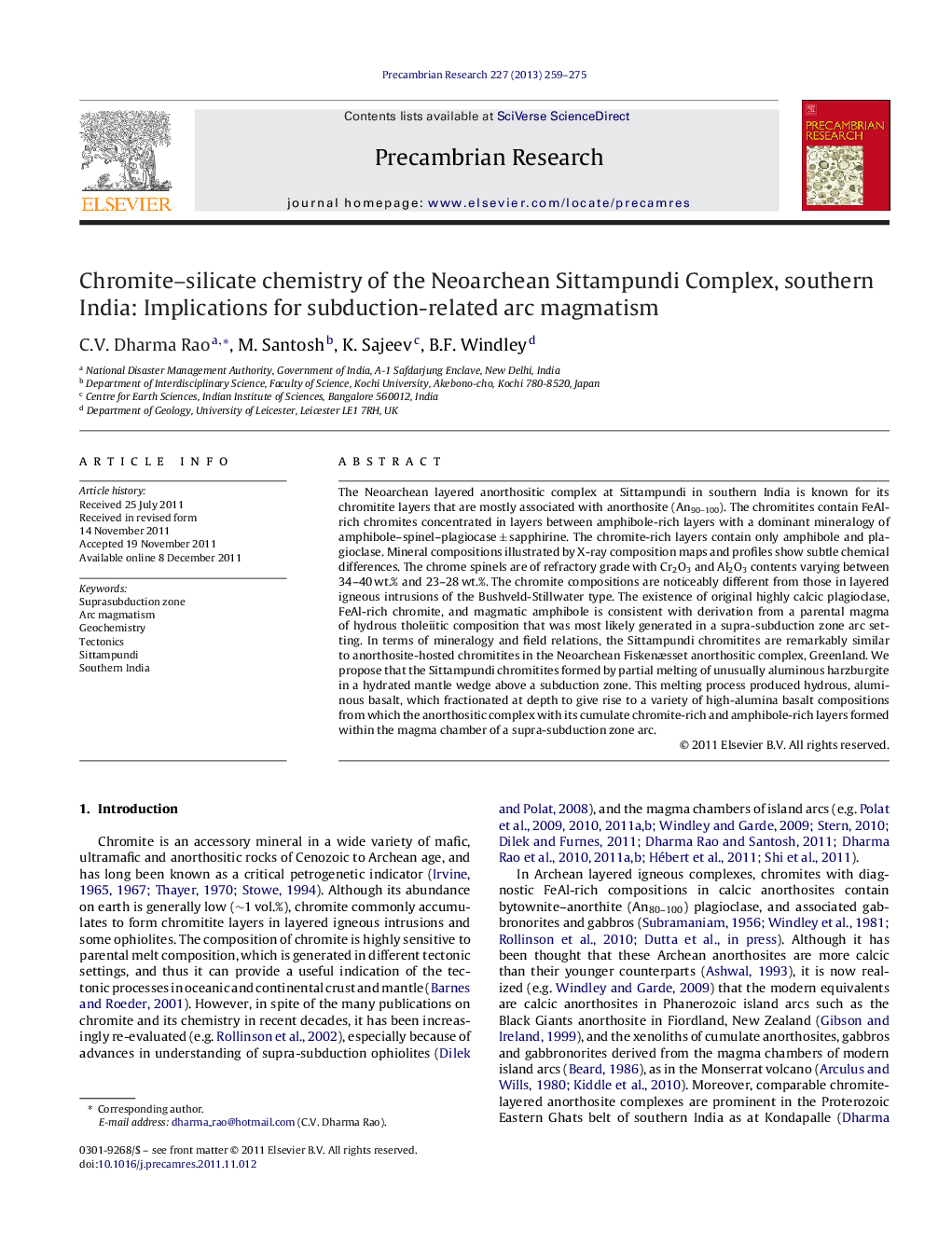| کد مقاله | کد نشریه | سال انتشار | مقاله انگلیسی | نسخه تمام متن |
|---|---|---|---|---|
| 4723404 | 1639647 | 2013 | 17 صفحه PDF | دانلود رایگان |

The Neoarchean layered anorthositic complex at Sittampundi in southern India is known for its chromitite layers that are mostly associated with anorthosite (An90–100). The chromitites contain FeAl-rich chromites concentrated in layers between amphibole-rich layers with a dominant mineralogy of amphibole–spinel–plagiocase ± sapphirine. The chromite-rich layers contain only amphibole and plagioclase. Mineral compositions illustrated by X-ray composition maps and profiles show subtle chemical differences. The chrome spinels are of refractory grade with Cr2O3 and Al2O3 contents varying between 34–40 wt.% and 23–28 wt.%. The chromite compositions are noticeably different from those in layered igneous intrusions of the Bushveld-Stillwater type. The existence of original highly calcic plagioclase, FeAl-rich chromite, and magmatic amphibole is consistent with derivation from a parental magma of hydrous tholeiitic composition that was most likely generated in a supra-subduction zone arc setting. In terms of mineralogy and field relations, the Sittampundi chromitites are remarkably similar to anorthosite-hosted chromitites in the Neoarchean Fiskenæsset anorthositic complex, Greenland. We propose that the Sittampundi chromitites formed by partial melting of unusually aluminous harzburgite in a hydrated mantle wedge above a subduction zone. This melting process produced hydrous, aluminous basalt, which fractionated at depth to give rise to a variety of high-alumina basalt compositions from which the anorthositic complex with its cumulate chromite-rich and amphibole-rich layers formed within the magma chamber of a supra-subduction zone arc.
► Chromite was derived from a hydrous tholeite generated in a supra-subduction zone arc setting.
► Sittampundi chromitites formed by partial melting of aluminous harzburgite in a mantle wedge.
► The study has important implications for the evolution of a subduction-generated, hydrous island arc, and its bearing on crustal growth in the Archean.
Journal: Precambrian Research - Volume 227, April 2013, Pages 259–275